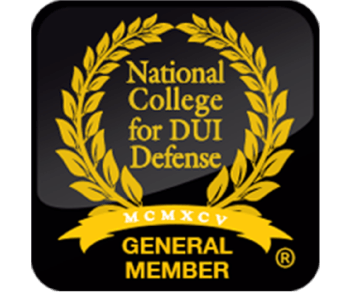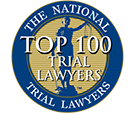Freedom of speech and the right to assemble publicly are fundamental tenets of American law, which enable you to speak out and demand change. This right is, however, not absolute and is balanced with the need to uphold order in society under Penal Code 404.6 PC.
However, where does California law distinguish between free, passionate speech and a criminal act amid a protest? Will your mere words result in a serious criminal charge, even if you do not commit any violence?
When you are arrested or being investigated for inciting a riot under PC 404.6 in San Diego, you should hire a lawyer to prevent the situation from getting out of control. Call the Law Offices of Anna R. Yum for a confidential consultation to ensure your rights are protected immediately.
Free Consultation (619) 233-4433
The Legal Definition Of Inciting a Riot Under Penal Code 404.6 Pc
When you hear the term “inciting a riot,” you might imagine a person who leads an angry crowd of people, actively participating in the riot. Although such a situation definitely fits the bill, the legal meaning of PC 404.6 is more detailed and subtle. You should understand that the law does not concern itself with your own involvement in the violence but with the act of urging or instigating others to engage in violence.
It is possible to be convicted of this crime without throwing a rock, breaking a window, or even physically confronting another person. The essence of the crime is your words and actions that provoke people to break into a riot. To maneuver your defense, one must first have a solid understanding of what the prosecution must demonstrate.
Key Elements to Demonstrate a PC 404.6 Violation
The prosecutor must demonstrate three elements beyond a reasonable doubt to obtain a conviction on inciting a riot. When they cannot establish any of these elements persuasively, the charges against you should be dismissed or lowered. The initial step towards dismantling the case of the state and developing a strong defense is to comprehend these aspects of inciting a riot.
-
You Had an Intent
Proving this is an essential and sometimes difficult aspect that the prosecution has to demonstrate. It is not sufficient that you said what you said in an emotional atmosphere or that a riot followed what you said. Therefore, the prosecutor must present evidence that you intended to create a riot.
They must enter your state of mind and show that your main intention was to create violence and chaos. Was it an ardent yet legal outburst of frustration, or was it a reasoned appeal to action that was to instigate instant and violent retaliation? This is the key difference in your case.
-
You Did an Act Or Performed an Activity That Directly Incited Others to Act Lawlessly
This element is almost always verbal, though it may involve gestures or other means of communication. As the law outlines, this behavior should induce others to act by force or violence, burn or destroy property, or engage in a riot. Unclear, ambiguous, or provocative words are not always sufficient.
For example, screaming that this is an injustice! is essentially unlike screaming, “Let us burn this building down!” The prosecution must demonstrate that your words consisted of a direct and unambiguous order or encouragement to others to commit certain destructive acts.
-
Your Acts Were Done In Circumstances That Posed a Clear, Present, and Immediate Danger of a Riot
This legal standard acts as a wall against the criminalization of free speech. It implies that the danger of a riot was not an event that would happen in the future or a hypothetical scenario, but an immediate and pressing danger at the moment and at that place.
For example, asking a crowd to do something in a written blog post that would be read days later would not satisfy this criterion. But screaming at people to hurl objects at a line of police officers when the situation is already at the boiling point can. The court will look at the time, the location, and the general environment to know whether your actions were really a real threat to the safety of the people. Here, the context of the situation comes to the fore.
Inciting vs. Participation in a Riot
One of the most frequently misunderstood and essential aspects of protest-related charges is that inciting a riot (PC 404.6) and being involved in a riot (PC 405) are not the same. This distinction is essential to you since it will alter what the prosecution must prove and how your defense can be organized. Inciting a riot is a crime of instigation. It is the fire that tries to ignite the fire.
As explained, to be convicted of inciting a riot, it must be proven that you urged, encouraged, or provoked other people to act violently. You may be standing still, speaking through a megaphone, or even posting on social media nearby, and be accused of it. Should any arise, whether you are physically engaged in the resultant mess is of no concern to this charge. The crime is accomplished when you seek to incite a riot in a state with an apparent and immediate threat of the event occurring.
Conversely, a riot is another crime. To be convicted of PC 405, you must have directly participated in the disturbance. This implies that you yourself applied force or violence or acted in agreement with others who did. You belonged to the riotous party, not only to the party that advocated its formation.
It is quite conceivable that someone can be accused of both crimes, such as when you encourage the mob to start killing people, and then you start to kill people. It is, however, equally possible to be accused of inciting a riot when you have not done anything physically destructive at all. It is imperative to understand that the charge against you is based on what you said and intended to do, rather than what you actually did.
Possible Punishment and Penalties for Inciting a Riot Conviction
Being charged with a crime is no laughing matter, and you need to be well-informed of the consequences that may arise so that you can value the need to have a strong defense. Inciting a riot is not a minor offense; a conviction is a misdemeanor offense with serious consequences. These punishments may interfere with your life, empty your pockets, and leave a criminal record, impacting your future employment, housing, and professional licensing prospects.
Standard Misdemeanor Fines
In most cases, the incitement to a riot based on PC 404.6 is charged as a misdemeanor. In case of conviction, the judge can punish you with various punishments.
-
Jail Time
The possible misdemeanor PC 404.6 fine may involve a maximum of one year in county jail. It is a big time in prison that can make you lose your family, your work, and your community.
-
Fines
Besides the jail time, you may be fined up to $1,000. Although it might not appear to be such an overwhelming sum, it is often coupled with a range of court charges and penalty payments that can significantly add to the overall sum you must pay.
-
Summary Probation
In other instances, especially where the person’s criminal record is minimal or non-existent, a judge can impose summary probation, also called informal probation. It is an alternative to a county jail sentence. When you are put on probation, you will be expected to abide by the terms and conditions for a given time, usually one to three years.
These terms include:
- Staying away from the specific location where the riot was incited, such as a particular park, government building, or city block
- The judge may prohibit you from associating with any other individuals who were arrested or known to be involved in the riot. This is intended to prevent further collaboration that could lead to unrest.
- You could be barred from attending or participating in protests, rallies, or demonstrations during probation.
- Sometimes, a judge might impose a curfew to limit your presence in public during evening hours when such events are more likely to escalate.
- The court could mandate participation in anger management classes or counseling designed to address issues with impulse control and promote peaceful forms of expression.
Violating any of these terms may result in the judge revoking your probation and returning you to jail.
-
Felony Wobbler
Certain situations exist in which inciting a riot charge may be taken to a much greater degree. In California law, the prosecution can choose whether to prosecute wobblers as a misdemeanor or a felony, depending on the facts of the case and their criminal record. This wobbler crime is subject to significantly more severe and increased punishment.
In the case of PC 404.6, the felony can be raised from a misdemeanor provided that you provoke a riot in a state prison or a county jail, and the riot causes someone to suffer a serious bodily injury. A serious bodily injury could include a concussion, broken bone, or wound that needs a lot of suturing.
This clause is meant to discourage and harshly penalize individuals who threaten the security and safety of correctional facilities.
In such a case, a conviction of felony inciting a riot will result in a possible sentence of 16 months, two years, or even three years in a California state prison. More importantly, this sentence would be consecutive. That means it would be added to any sentence you were already serving.
Possible Expungement
After completing the terms of your summary probation, you may be eligible to have your conviction dismissed through a process known as expungement under California Penal Code 1203.4. An expungement releases you from many of the “penalties and disabilities” associated with the conviction.
For example, after an expungement, you can lawfully state on most job applications that you have not been convicted of that crime.
To be eligible, you must have fulfilled all your probation requirements and not currently face any other criminal charges. However, an expungement has limitations. It will not overturn a driver’s license suspension, and critically, it generally does not restore your right to own a firearm if it was taken away due to the conviction.
Furthermore, the expunged conviction can still increase your sentence in a future criminal case.
Defense Strategies to Fight a PC 404.6 Charge Against You
An arrest does not imply a conviction; a charge does not mean a guilty verdict. You are entitled to question the prosecution’s case at every step. A robust legal defense is not only possible but necessary in a case as subtle as inciting a riot, which depends on intent and the meaning of words spoken in a riotous setting.
Several effective defense tactics can be used to demolish the prosecution’s arguments and defend your freedom. The defense you will have will be based on the particular facts of your case, but it will probably be based on some common and effective pillars of law.
You Were Exercising Your First Amendment Right Of Free Speech
The First Amendment to the U.S. The Constitution protects freedom of speech, one of the pillars of American democracy, and the right to protest in California. This is arguably the most significant safeguard against a PC 404.6 charge provided by this constitutional protection.
The statute was drafted to prevent passionate, and even angry, political speech from being a crime. Your defense can vigorously claim that whatever loud or vehement thing you said was a kind of shielded expression and not a criminal incitement to violence.
To make this First Amendment defense work, your legal team must clearly distinguish between your speech and the limited type of speech the law can penalize. A call to other protestors to shout louder, to raise their signs higher, to be heard, or even to use vulgar language to denounce an injustice is a safeguarded activity.
The First Amendment permits shocking, distasteful, and defiant speech of authority. It does not, though, guard speech that is directed particularly at inciting imminent lawless action and is likely to result in such action. The trick is to prove that what you said was included in the general conversation and protest, not a personal order to go out and do acts of violence or destruction.
No “Clear and Present Danger” of a Riot
As explained above, the clear and present danger element is a vital element that the prosecution must demonstrate. Therefore, this is one of the best methods to combat the charge by claiming that this standard was not achieved. This PC 404.6 defense is based not on what you say, but on the circumstances under which you said it. You may say that, despite what you say, the surrounding circumstances did not create the immediate and substantial risk of a riot.
To develop this no-immediate-danger defense, your lawyer will examine the facts of the case. How large was the crowd? Was the general attitude of the crowd quiet or excited at the time you spoke? Was the law enforced and in charge of the scene? Was there any practicability that the crowd should at once follow what you said?
To illustrate, hypothetically, when you called on people to storm a building several blocks away, heavily surrounded by police, it might be noted that there was no immediate threat of that occurring. If the crowd was small and scattered, or if they did not pay much attention to what you said, that too might be used to prove that the threat was not evident or imminent. This approach turns the attention to the inability of the prosecution to prove the high standard of the clear and present danger test.
False Accusation or Mistaken Identity
By definition, protests are loud, disorienting, and disorderly places. Amidst the screaming, chanting, and high-speed action, it is so simple to err on the part of law enforcement officers. A wrongful identity defense is a simple and strong defense that the police merely arrested the wrong individual. You were in the scene, but not the one inciting the mob to violence.
This defense works exceptionally well when no clear video or audio recording can prove beyond a doubt that you were the instigator. Eyewitness testimony, particularly by the police in a stressful environment, is not reliable.
Your lawyer may question the officer on whether he/she can see and hear well in the hectic situation. Maybe you are just like the real offender, or you were just standing in the same position as the shouter. In such situations, your defense would do its best to point out the flaws of the prosecution’s evidence and create a reasonable doubt that you committed the crime.
False accusation or protest arrest is a possibility that is very real, and a defense that fully claims your innocence.
Related Charges Often Filed Together with PC 404.6
In the case of a protest or a riot, when you are arrested, the prosecution seldom charges you with a single offense. They may also charge, stack, or file several related crimes in an attempt to obtain a conviction. These other possible charges are essential because each has particular elements and penalties. This information will give you a complete picture of your legal issues.
Participation in a Riot, California PC 405
The most prevalent offense prosecuted is inciting a riot, which is being a part of a riot covered by Penal Code 405. As we have seen, this charge is not only of your words but also your deeds. To be convicted of having been involved in a riot, the prosecutor must demonstrate that you, along with two or more individuals, knowingly participated in the use of force or violence that disrupted the peace of the people. That is to say, you were not a spectator of the riotous crowd, but a participant in it. The significant distinction between these California riot charges is that they involve active versus verbal instigation.
Unlawful Assembly, California PCs 407 & 408
Unlawful assembly is another related offense addressed by the Penal Code sections 407 and 408. You may be accused of illegal assembly when you assemble two or more persons to commit an unlawful act done violently and disturbingly. There is a restriction on the freedom of assembly, and this law draws one of the boundaries.
In contrast to rioting, an illegal gathering does not presuppose that any violence has taken place. The crime consists of the collection itself, with the common criminal intent. An initially peaceful protest may be declared an unlawful assembly by the police when they feel its aim has changed to criminal activity.
Refusal to Disperse, California PCs 409 & 416
The law enforcement may order the crowd to vacate the premises once they have declared an event a riot or an unlawful assembly. If you receive a lawful police dispersal order and willfully refuse to do so, you may be charged with refusal to disperse under Penal Code 409 or 416.
The critical factors in this case are that a legal order was issued and that you deliberately stayed at the scene. This accusation is commonly used in mass arrests at demonstrations, and it is sometimes used to detain individuals who have not heard the command or who cannot safely get away.
Disturbing the Peace, California PC 415
Disorderly conduct or disturbing the peace is a more general and minor crime described in Penal Code 415. Some of the activities that can be considered to be disturbing the peace are:
- Fighting in a public area illegally
- Using obscene language, which is most likely to result in an immediate violent response (so-called fighting words)
- Creating an unreasonable, loud noise maliciously
Prosecutors occasionally include this charge as an alternative to a riot count, with the view that, although they might not be able to establish the elements of a riot, they may be able to develop a conviction of this lesser offense.
Fight a PC 404.6 Charge With a Criminal Lawyer Near Me
It is daunting to maneuver a charge of inciting a riot under PC 404.6 in San Diego. It is full of legal intricacies that make distinguishing between the constitutional right to free speech and a criminal act difficult. It is not a conviction, but the stakes are high in an arrest. A guilty verdict may result in a lengthy jail term, hefty fines, and a permanent criminal record that makes it difficult to work, get a place to live, and enjoy fundamental rights.
You need a skilled criminal defense attorney to effectively counter the charges and mitigate the potentially life-altering consequences. The attorneys at the Law Offices of Anna R. Yum have the expertise to dissect the prosecution’s case and champion your rights. Call us at 619-493-3461 for a confidential consultation to ensure your rights are protected immediately and to begin building the strongest possible defense for your case.











